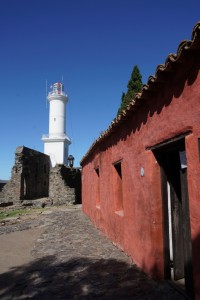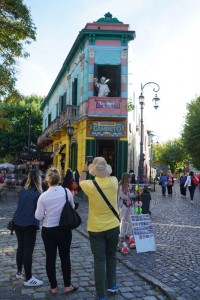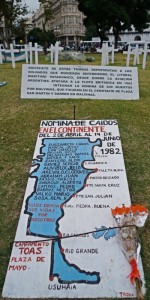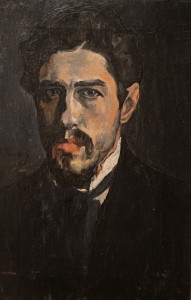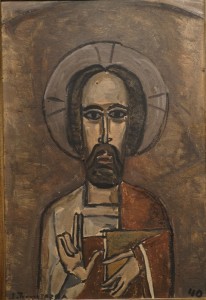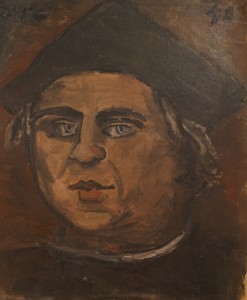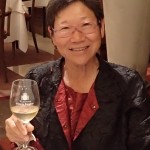Uruguay- Montevideo & Colonia; Argentina- Buenos Aires: April 4-8, 2017
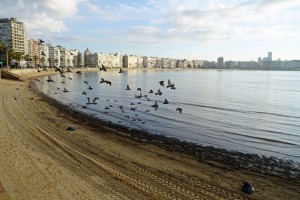 April 4 Tuesday: Full Day Excursion to Punta del Este
April 4 Tuesday: Full Day Excursion to Punta del Este
I got out of the bed after 6am and left the hostel by 7am. I had to take the door key with me as the reception was closed. I had to go to the Masini Suite Hotel where I would be picked up around 8:30 pm. As I still had more than an hour, I asked the receptionist for permission to leave my backpack in the hotel and had a nice walk along Playa Pocitos, a beach in a popular middle/upper middle class neighbourhood.
The mini-bus arrived on time. I had a quick tour of the posh neighbourhood when the bus went to pick up the last passenger in a hotel near the beach before driving along the Rambla (the coastal road). Our first stop was Piriápolis founded in 1890 by a rich businessman Francisco Piria who bought a very big stretch of land all the way to the beach. Today the city is centred on the Rambla de los Argentinos (a waterfront promenade). We were taken to one of the hill tops where the Temple of San Antonio is located for panoramic view of the city and the coast.
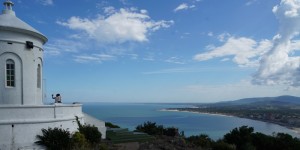 |
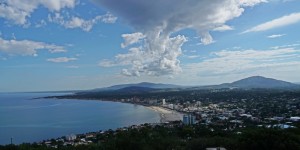 |
The second stop was at the Museo Taller de Casapueble of Carlos Páez Vilaró(1923-2014), Uruguay’s towering cultural icon. Vilaró, a prolific artist whose works spannedthe medium of painting, sculpture, literature, screenwriting, ceramic, architecture, film and music. In 1958 he decided to build his house on the rocky cliffs of Punta Ballena. Casapueblewhichwas modeledon the concept of the hornero (‘bird-nest’) took 40 years to complete. It is unique, rustic and beautiful with stunning sea view.The entrance fee is $8.
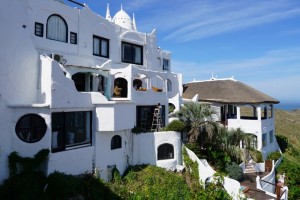 |
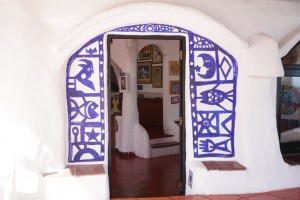 |
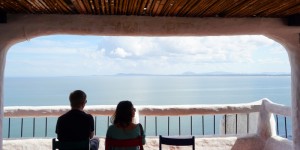 |
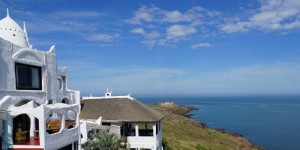 |
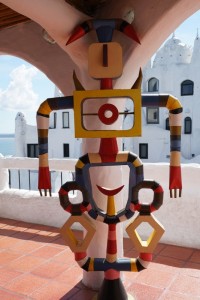 |
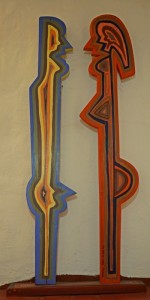 |
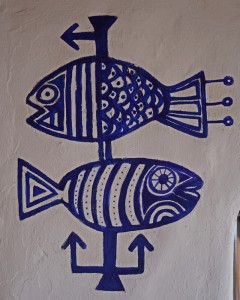 |
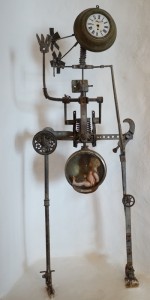 |
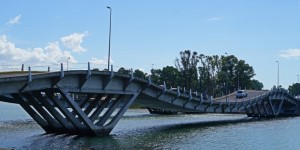 The guide then showed us the posh neighbourhoods of San Rafael, Cantagril and Beverly Hills which are filled with luxurious holiday houses or homes for retirees coming from overseas.
The guide then showed us the posh neighbourhoods of San Rafael, Cantagril and Beverly Hills which are filled with luxurious holiday houses or homes for retirees coming from overseas.
Before heading to Punta del Este, we made a detour to see the Puente Leonel Viera Bridgewhich is unusual: the bridge is not flat but resembles a roller-coaster!
We had a long break from 1:30 to 4 pm in Punta del Este, located on a small peninsula where the Rió de la Plata meets the Atlantic Ocean. It is touristic with a yacht port, over 100 hotels, countless eateries and casinos. I had a grilled fish fillet in a local eatery. Despite its location by the sea, this local eatery does not serve fresh whole fish. What a pity!
After lunch, I strolled around for two hours. Its landmarks include the 45m-tall Faro de Punta del Este (the lighthouse) and the Fingers ofPunta del Este (an art installation on the beach). Its beaches are divided into Mansa or meek (river side) and Brava (ocean side). This place does not appeal to me: it is touristy, deserted and dead except in holiday seasons.
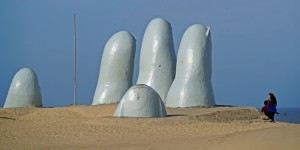 |
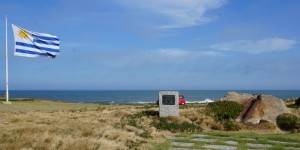 |
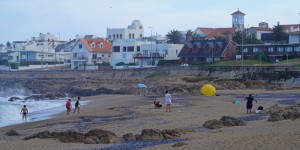 |
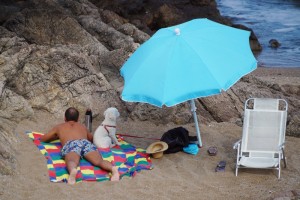 |
I was determined to check out the downtown area. I asked the guide to drop me off on San José street where there are many hotels. I first went into a 3-star hotel which asked for $55 a night. It’s over-priced. I walked across the road to Hotel Embajador, a 4-star hotel. When the receptionist agreed to lower the price to $65, I decided to take the offer so that I could have a decent sleep.
Once I left my backpack in the room, I went out to see the capital by night. I walked along Avenue 18 de Julio till I reached the Independence Plaza. Most of the shops were closed. But there were still plenty of people on the street and in the parks. The city is not run-down and does not look ‘unsafe’ by my standard. On my way back to the hotel, I passed by Sala Zitarrosa which had a music performance that evening. I paid UYU200 for a ticket. Patricia Robaina,ayoung singer with a cool and soft voice, was accompanied by a guitarist and cellist. Despite the small audience (less than 20), the three artists gave an excellent performance. The guitarist is my favourite. I was back in my hotel room before 9pm and slept for nine hours.
April 5 Wednesday: Montevideo – Colonia del Sacramento
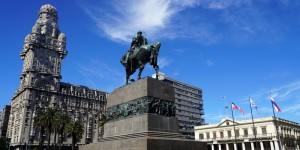 Montevideo situated on the northeastern bank of Río de la Plata and founded in 1724 by Governor and Captain General of the River Plata Bruno Mauricio de Zabala, is the capital and the largest city of Uruguay with over one-third of the country’s population. It was under brief British rule in 1807. With a per capita of $24, 000 (2015), it has the highest quality of life in Latin America. It is often described as a “vibrant, eclectic place with a rich cultural life” and a “thriving tech centre and entrepreneurial culture”.
Montevideo situated on the northeastern bank of Río de la Plata and founded in 1724 by Governor and Captain General of the River Plata Bruno Mauricio de Zabala, is the capital and the largest city of Uruguay with over one-third of the country’s population. It was under brief British rule in 1807. With a per capita of $24, 000 (2015), it has the highest quality of life in Latin America. It is often described as a “vibrant, eclectic place with a rich cultural life” and a “thriving tech centre and entrepreneurial culture”.
Montevideo with one-third of the country’s population is green with an eclectic mix of old colonial and modern buildings which architectural style ranges from neoclassical, European, art deco to postmodern style. The city blocks were set out in a Northeast – Southwest orientation and at right angles. The old city which was once surrounded by a wall is the historic centre. The Rambla (the coastal avenue) is 13km-long with many sandy beaches. The city has tree-lined streets, three large urban parks namely Parque Rodó, Parque Prado and Parque Batlle, and numerous squares and parks.
I always love old cities. My plan for today was to spend the morning in the old city before taking the 3:15pm bus to Colonia. After an early breakfast, I left the hotel before 8am with a walking map detailing all buildings of significance. I strolled along the Avenue 18 de Julio which is lined with iconic and government buildings and monuments.
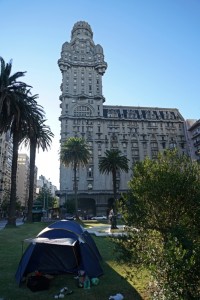 |
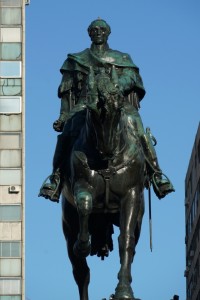 |
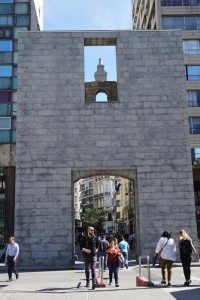 |
After a short walk, I arrived at the Independence Plaza with the statute of General José Gervasio Artigas (1764-1850) on horseback in the middle of the square. At the end of the avenue is the Palacio Salvo (1922-28) on one side and the Palacio Rinaldi (1929) on the other.
I entered the old city through the Puerta de la Ciudadela (1746) (the gate of the original fortress of Montevideo) and wandered aimlessly in the old city which spreads around seven streets . I followed Sarandi to the Plaza Constitucion (Plaza Matriz) (1726) where the Iglesia Matriz (1790) stands. Further down is the Plaza Zabala (1878) (site of the original Governor House and warehouses).
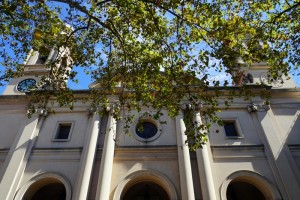 |
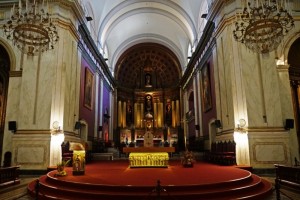 |
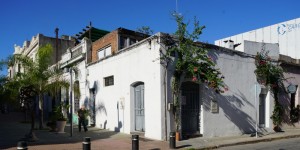 |
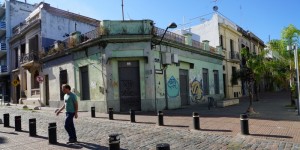 |
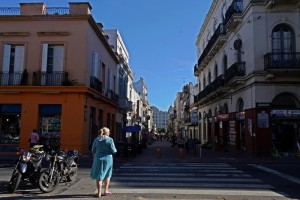 |
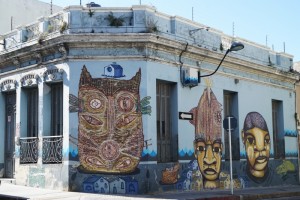 |
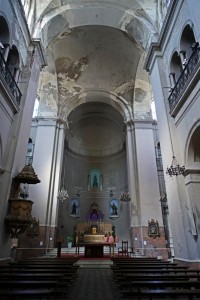 |
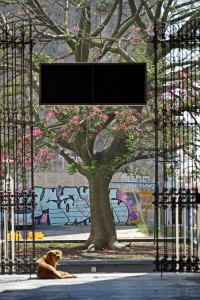 |
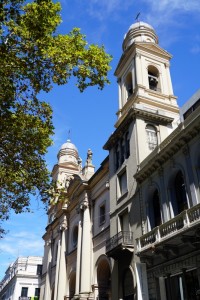 |
Next I walked towards the Port Market (1865-68) which is now occupied by eateries and bars. They were all closed in early morning. I notice there are a number of boutique hotels and nice cafes and restaurants. But many buildings near the port area are derelict though a few are under restoration. The residential blocks here look basic but tidy by South American standards. I walked to Punta Santa Teresa and could see developments along the Rambla and Río de la Plata.
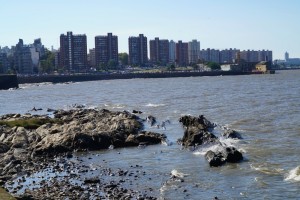 |
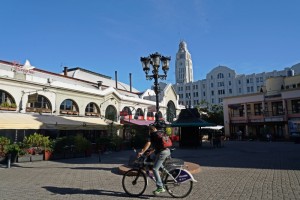 |
This morning, I visited two churches (Iglesia Matriz & Iglesia de San Francisco) and four museums. Of the three museums, I find the Torres García Museum (1920s), more interesting as some English translation is provided. Born in Montevideo and moving to Spain at the age of 17, García (1874 – 1949) returned to Uruguay in 1934 and developed his own philosophical and aesthetic system known as “Constructive Universalism” and founded the “School of the South”. I am amused to see the toys he made and his series of constructive portraits of world famous musicians and artists including Beethoven and El Greco. (Entrance fee: ARS120).
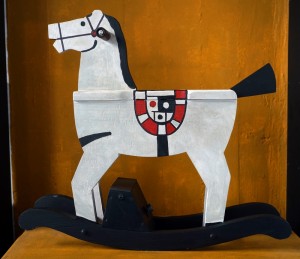 |
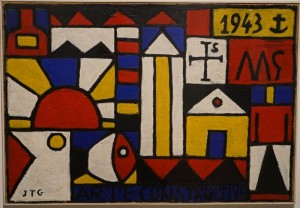 |
The Pre-Columbian and Indian Art Museum (19th century) is disappointing with few display of significance. It’s a waste of time and money! The Municipal Museum and Historic Archives (1804) housed in the old town hall and the former parliament building is free for visitors. The building is beautiful and displays are carefully laid out. Unfortunately all information is in Spanish.
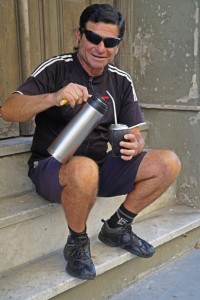 |
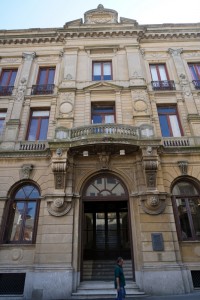 |
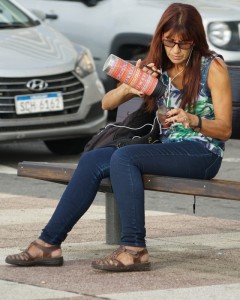 |
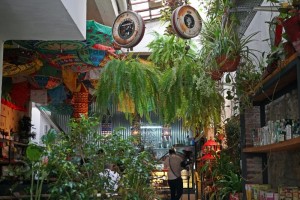 I had lunch at Tibet Garden run by the owner of Tibet Hostel. I gave him the door key and ordered a set lunch with fish, pumpkin, avocado and salad. I paid only UYU 150 for a wholesome and healthy lunch which is the best I had in Uruguay.
I had lunch at Tibet Garden run by the owner of Tibet Hostel. I gave him the door key and ordered a set lunch with fish, pumpkin, avocado and salad. I paid only UYU 150 for a wholesome and healthy lunch which is the best I had in Uruguay.
I walked back to the hotel and picked up my backpack before taking a local bus to the bus terminal at Tres Cruces. The bus fare is UYU 24. I arrived at the terminal around 2:30pm and brought a ticket for the 3:30pm bus (UYU 360). Out of curiosity I asked Colonia Express about the fare to Buenos Aires. The salesman said “$30 for the bus and ferry which is much lower than what I had paid (UYU360+ARS640).
Things went smoothly and the hostal I booked online in Colonia was fine. It was after sunset when I settled down in my room. I took a stroll and found many restaurants. I chose a quiet restaurant in an old house and met two cheerful young waitresses. I ordered sweetbread and had a beer. Then three Argentines on a business trip sat down and we began exchanging views on life in Uruguay, Argentina and Hong Kong as one of them has been doing business in Hong Kong, Taiwan and China. I ordered a glass of wine. They were waiting for their boss who arrived later and decided to eat elsewhere. They have commented that Uruguay is more expensive than Argentina. I agreed with them when I was charged UYU850 for two drinks and a small portion of sweetbread. I did not know why I could not sleep tonight. Perhaps, I was not tired enough.
April 6 Thursday: Colonia del Sacramento, Uruguay – Buenos Aires, Argentina
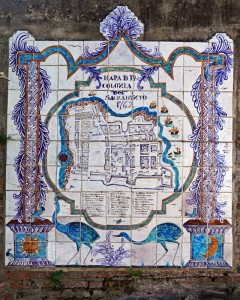 Colonia one of the oldest towns in Uruguay was founded by the Portuguese in 1680. But the Spanish took possession following the Treaty of Utrecht in 1705 and stayed till 1713. Then the town was under the control of either Portugal or Spain in the 18th century. In 1811, Artigas led revolt against the Spanish and the town was briefly under the Brazilian control from 1822 to 1828. It became part of Uruguay since its independence. Its original historic quarter is a World Heritage Site.
Colonia one of the oldest towns in Uruguay was founded by the Portuguese in 1680. But the Spanish took possession following the Treaty of Utrecht in 1705 and stayed till 1713. Then the town was under the control of either Portugal or Spain in the 18th century. In 1811, Artigas led revolt against the Spanish and the town was briefly under the Brazilian control from 1822 to 1828. It became part of Uruguay since its independence. Its original historic quarter is a World Heritage Site.
I got up early hoping to watch sunrise. But I was too late and the sun had already risen above the horizon. Anyway, I enjoyed strolling in the empty town for almost two hours before returning to the hostal for breakfast at 9:30am.
I checked out, left my backpack and explored the historic centre for the next few hours as I would not depart for the pier till 3 pm. I love the idyllic and peaceful atmosphere, simple architectural styles of the early Portuguese colonists and tree-lined streets. The historic centre is small, neat, leafy, beautiful and tranquil. After 11am, day-trippers began to arrive by ferry from Argentina or road from Montevideo.
The town does not boast impressive and big monuments or buildings. But the whole place is charming and peaceful as though it has never corrupted by modernisation and its vices. I love the river, modest earthy houses, cobblestone streets, trees and parks. I soak in the atmosphere and can even live here! At the Plaza Mayor, the town’s main square and focal point, workmen were busy picking up fallen leaves from the lawn. Nearby is the ruins of the San Francisco convent where the lighthouse was built.
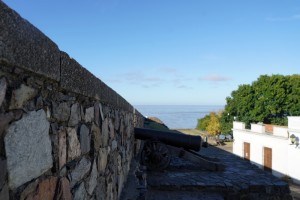 |
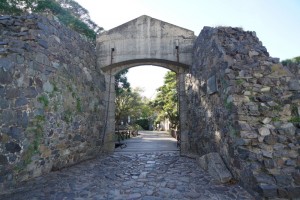 |
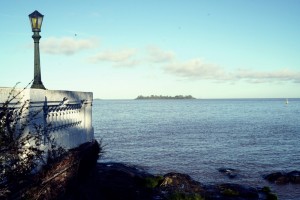 |
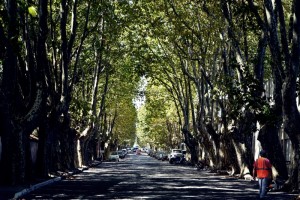 |
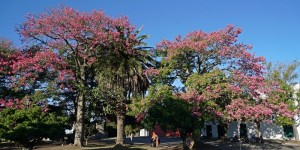 |
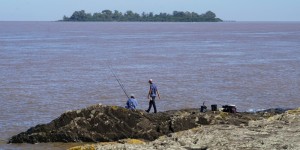 |
I walked to the Basilica of the Holy Sacrament and sat by myself for a while. It is atmospheric.
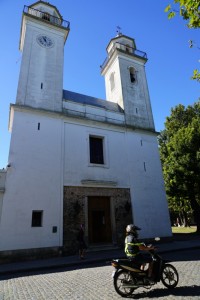 |
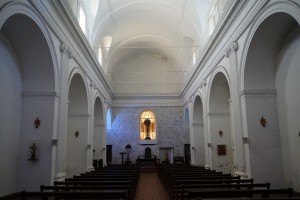 |
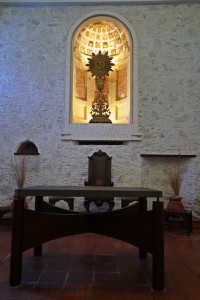 |
The most enchanting experience is to walk mindfully on the cobblestone streets. Calle de los Suspiros (Street of Sighs) with the original pavement and houses belonging to the first colonial period is photogenic and one of the most photographed spots in Colonia.
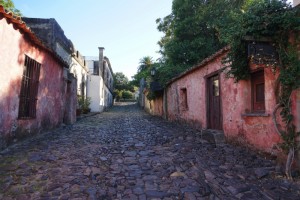 |
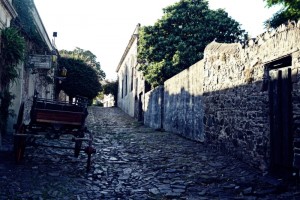 |
Many of old houses have been turned into museums. A combined museum ticket costing UYU50 gives holders access to eight museums. I visited only five of them as some were closed or too far away. The Portuguese Museum housed in a building typical in the 18th century house exhibits Portuguese furniture replicas, uniforms and maps. The Municipal Museum housed in Casa del Almirante Brown built by the Spanish in 1835 have some interesting exhibits too. The Nacarello’s House another Portuguese construction of the 18th century with an orange external wall is photogenic. The Regional Archive and Tile Museum are small without many exhibits.
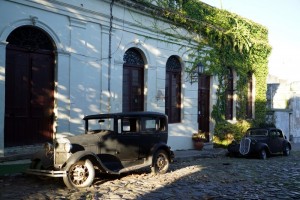 |
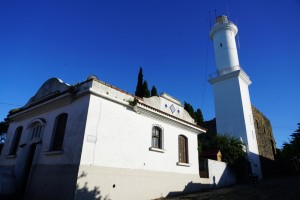 |
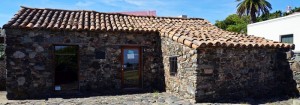 |
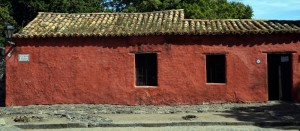 |
I ran into my Argentine friends sitting in a local restaurant again. They invited to drink and dine with them. I thanked them for their hospitality but moved on. They were here to talk with prospective investors in in real estate projects. They asked me whether I knew rich Chinese investors! Of course not!
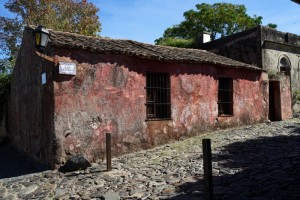 |
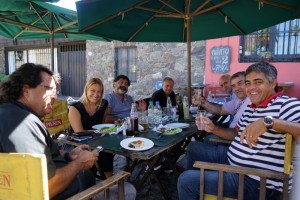 |
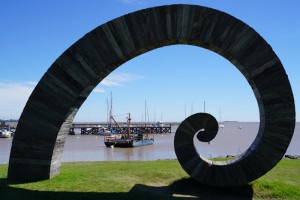 |
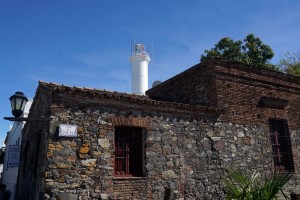 |
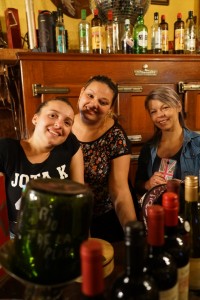 |
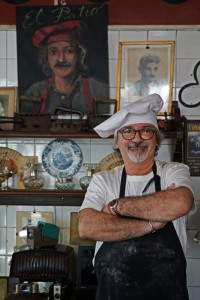 |
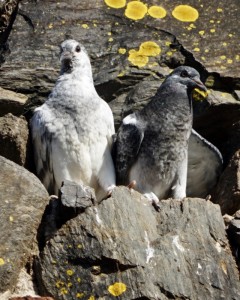 |
After a relaxing morning, I took the 4:15pm ferry and landed in Buenos Aires by 5:30 pm. This time I took a different path – Estates Union and arrived at Bar Sur. The owner came out and told me that the film “Happy Together” was filmed in his bar with Leslie Cheung and Tony Leung dancing in a dark corner of the bar. He told me to return to watch tango at 10pm ($60 including a drink). I loved the idea but could not bring myself coming out so late in the evening by myself. I was lazy: I did not even bother to go out for dinner. Instead, I had instant noodles and red wine in my spacious duplex!
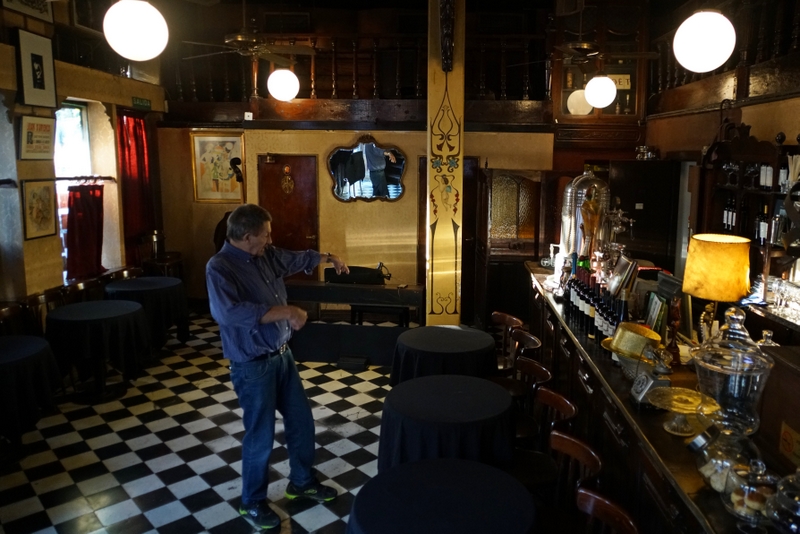 |
April 7 Friday: Buenos Aires
Today’s my last day of this trip. There are too many things to do but I set my mind on only three things. First, I took a local bus to the airport bus Tiends Leon terminal at Retiro. I booked a pick-up at 7am the next day thinking my plane would depart at 12 noon. It was wrong: my plane would depart at 1:30pm. While a taxi to the airport would cost over ARS 500, the bus fare including a hotel pick-up is ARS 265. For two or more persons travelling together, a taxi would be a better choice.
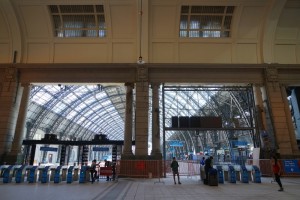 |
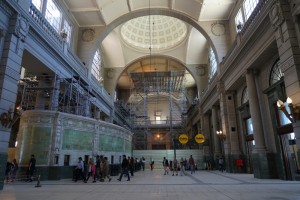 |
My second stop was the La Recoleta cemetery. I followed first Avenue del Libertador and then walked wherever I fancied in the direction of Recoleta,. I walked past the French Embassy which is grand but not big. The French are artistic: they have placed portraits of women from some oppressive countries on the fence surrounding the building. A clever way to draw attention to the plight of women in many parts of the world.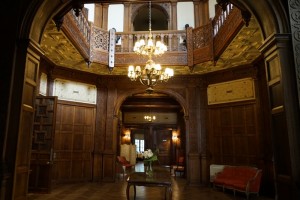
It’s the first time I walked in this posh neighbourhood with fashion boutiques, art galleries and cafes. I was walking along Avenue Quintana when I saw Palacio Balcarce which looks grand. I walked in and discovered a restaurant with a daily special for ARS 150. I went in and had a curry and a beer in the veranda. The service is good and the food is delicious. The most wonderful thing is the setting with elegant wood paneled dining room and a beautiful garden.
I finally arrived at the cemetery located on a site of 5.5 hectares built around the convent and a church, Our Lady of Pilar built in 1732. Many notable people including presidents of Argentina, Nobel Prize winners etc have been buried here. I followed the crowd and arrived at the family grave of the First Lady of Argentina Eva Perón (1919-1952) from 1946 to her death of cancer in July 1953. She has been internationalised through the successful musical ‘Evita’ produced in 1976. Most people of my age can remember the song “Don’t cry for me Argentina’.
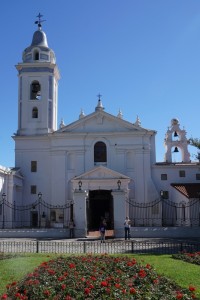 |
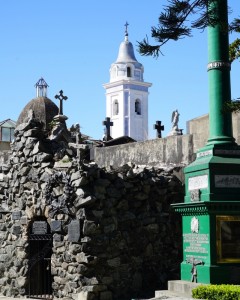 |
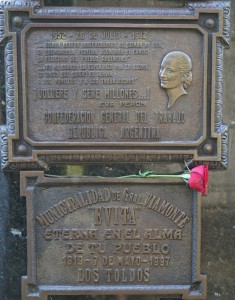 |
The final stop was La Boca which I visited with Lillian in 1989. The bus trip took almost an hour owing to traffic jam. It was 4:30pm when I got off the bus in this poor and fairly run-down neighbourhood. I have been told to leave the area before dark.
I first visited the Proa Foundation, a private art centre founded in 1996. I saw a retrospective on Yves Klein (1928 – 1962), a leading member of the French artistic movement of Nouveau réalisme founded in 1960 by art critic Pierre Restany. Klein was a pioneer in the development of performance art and a forerunner of minimal art and pop art. He is considered an important figure in post-European art.
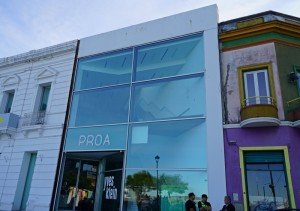 |
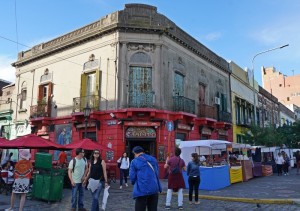 |
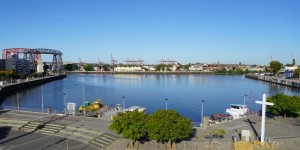 |
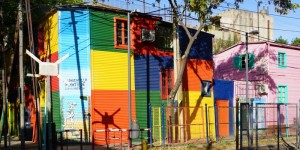 |
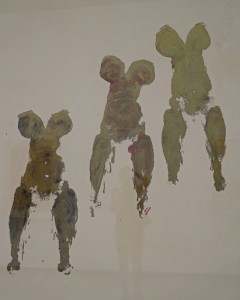 |
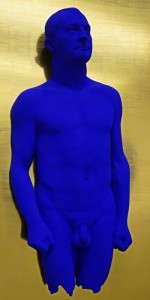 |
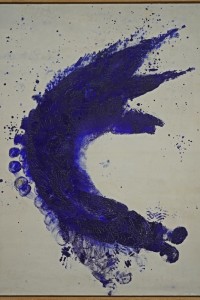 |
Then I walked to Caminito, a pedestrian street with colourful houses that Lillian and I liked very much in 1989. Sadly, the freshness and artistic appeal of the area has gone. The area has been ruined by mass tourism and the area is touristy with countless bars, eateries and souvenir stalls and shops. The place is no longer for me.
I hurried to leave and took a bus to Plaza de Mayo. I managed to take a few photos before it got dark. Today, I saw another protest group in the plaza. I asked a lady what the protest was about. She explained a young girl had gone missing on Saturday six days ago. Apparently the number of missing young girls is on the rise. A crime? A Social problem? What should and can be done? I wonder.
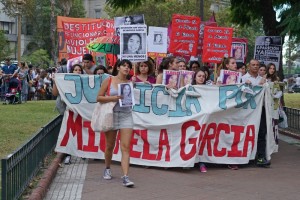 |
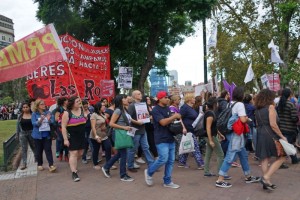 |
Time for a farewell dinner! I picked Restaurante Palacio Espana opposite my hotel. I had cod and seafood and a small bottle of white wine for ARS 425. The service is excellent and the setting is grand but comfortable. Excellent value!
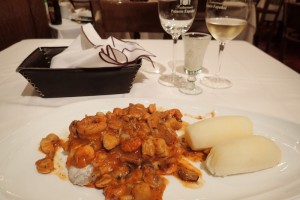 |
April 8-9 Saturday- Sunday: Buenos Aires, Argentina – Madrid, Spain – Hong Kong
I do not like long-haul flights. To return to Hong Kong from South America, one has to take at least two long-haul flights. As I had to be back in Hong Kong by mid April, I decided to take two 12-hour flights with a six-hour transit in Madrid.
I made a mistake and took the 7:30am bus to the airport. I was too early to check in as my plane was not leaving till 1:30pm (not 12:30pm). I had breakfast in a cafe and went to the check-in counter after 10:30am. I was shocked to find a long queue with only two counters for economy passengers who required check-in service. As I had to issue my CX ticket and check my luggage through to Hong Kong, I preferred to wait instead of using the check-in machine. The staff were not efficient and I waited for an hour! Horrible!
The IB/BA flight to Madrid was full. Though I could not sleep, I was able to move freely as I had an aisle seat. I arrived in Madrid before 6am on April 9 and spent almost six hours in the lounge. Luckily
I had a premium economy seat on the CX flight to Hong Kong. The seat is more comfortable and the food was good. As usual I could not sleep and watched six films instead. I landed in Hong Kong around 7am local time on April 10. By the time I went to bed in my sweet home, I was without sleep for 50 hours. Luckily, I do not have jet lag!


